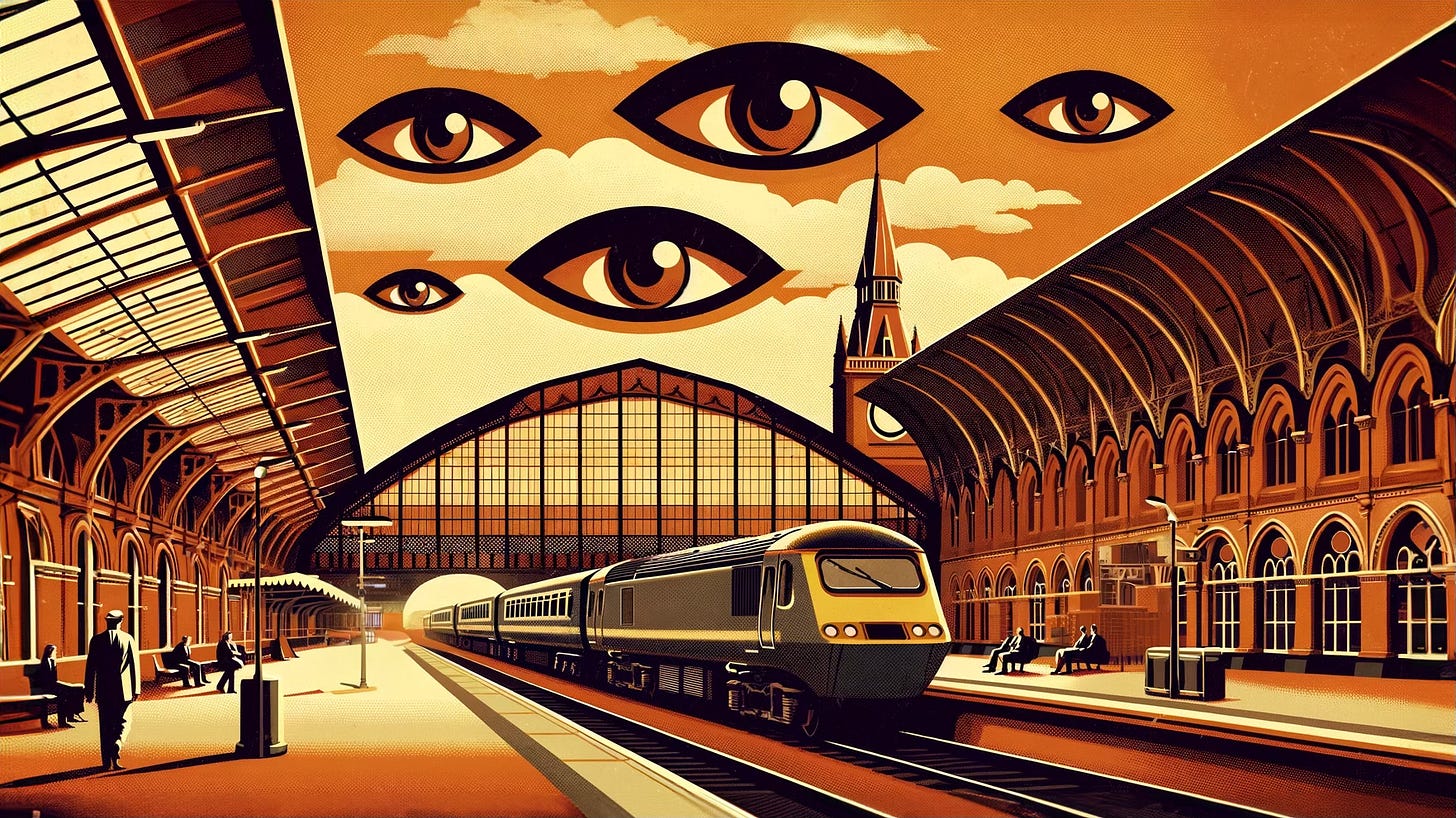Here's how Network Rail is using that crazy AI camera tech
It's not just TfL – mainline train stations are testing and using AI CCTV cameras too

You might remember a few months ago I wrote about the – frankly incredible – experiment at Willesden Green Tube Station.
In essence, what Transport for London (TfL) realised is that it could apply AI image processing to CCTV, transforming what were previously flat images into rich sources of data to help manage and operate the station. It makes it possible to, for example, automatically identify passengers who may require assistance or medical help. And the cameras can also monitor crowds, spot fare evaders, and even identify discarded coffee cups and other litter.
I really recommend reading the post for the full story (free to read!).
Anyway, this week I’m excited to present a sequel of sorts, as I’ve uncovered some more previously unseen examples of this AI camera tech in action on our railways. As it turns out that Network Rail (NR), the body that oversees much of our national train network1, has also been experimenting with AI cameras – and other connected sensors too.
In fact, NR has been trialling the tech in stations big and small: Tests have been conducted, or are underway in eight large stations – Liverpool Street, Glasgow, Leeds, Manchester Piccadilly, Kings Cross, Waterloo, Euston and Reading. And in a couple of small, rural stations, Marsden in Yorkshire, and Dawlish in Devon, too.
Using to the Freedom of Information Act, I’ve obtained a cache of documents that reveal just some of the extent of Network Rail’s thinking about how this technology can improve how the railways work. And it’s almost as amazing as what TfL has been doing.
So let’s dig in and find out how Network Rail is using this crazy new technology. All aboard!
Keep reading with a 7-day free trial
Subscribe to Odds and Ends of History to keep reading this post and get 7 days of free access to the full post archives.


